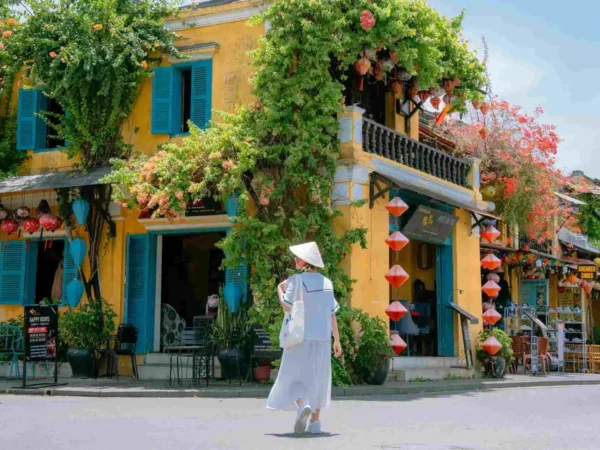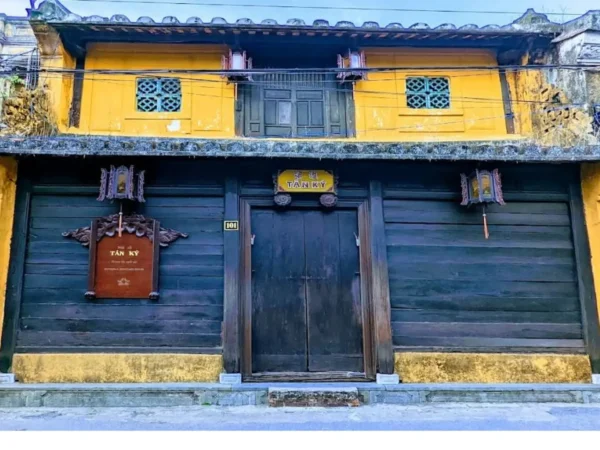Tan Ky Old House Preserves Glorious Architectural Legacy
Ever been to Hoi An and felt like everything blends together – pretty, yes, but missing something deeper? Tan Ky Old House quietly breaks that pattern. It doesn’t shout for attention, but once you step inside, something shifts. Time feels slower. There’s a quiet soul here that most places lost long ago. This isn’t just another stop; it’s a space that speaks—if you’re willing to listen. Curious what makes it so different? Keep reading. You won’t see Hoi An the same way again.
Overview of Tan Ky Old House
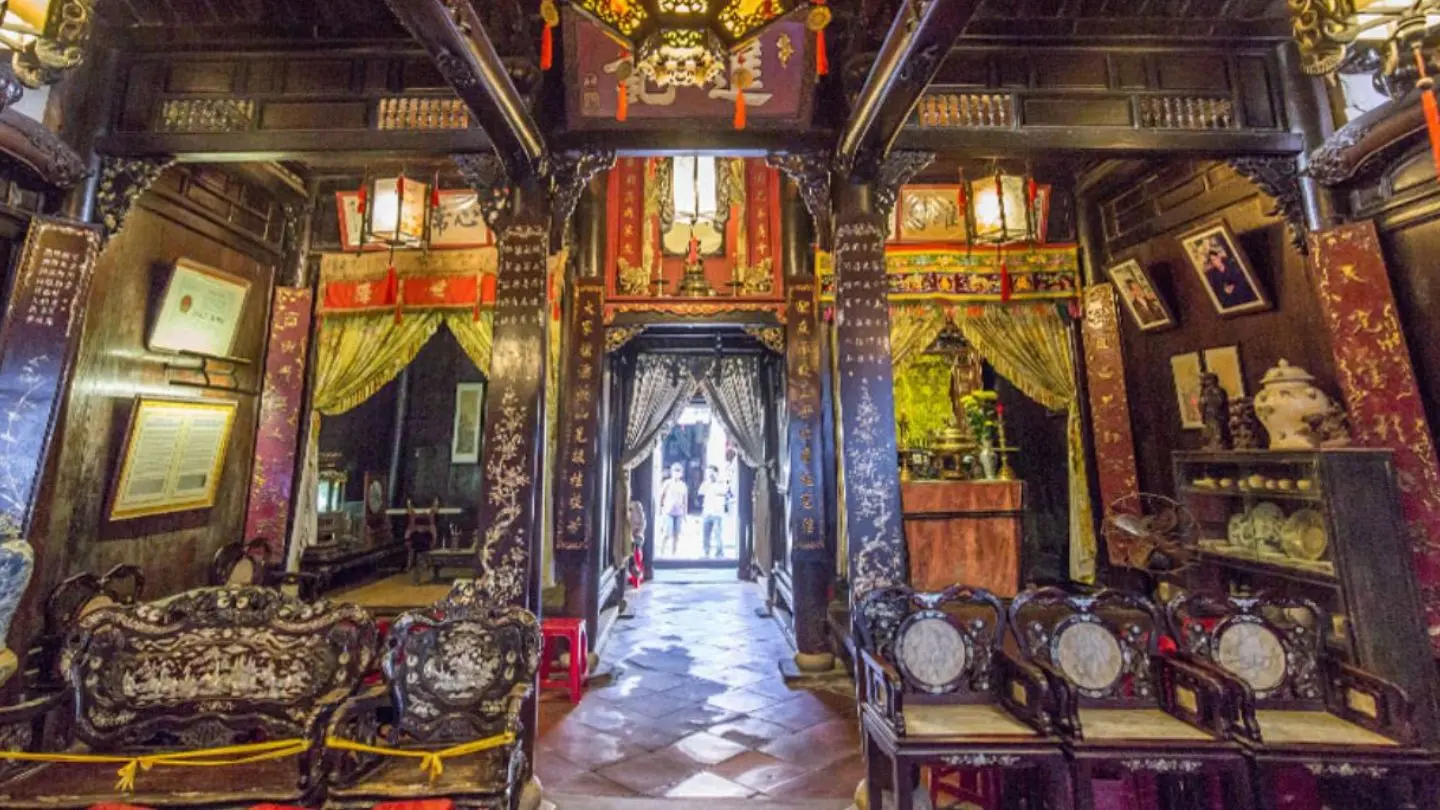
- Location: 101 Nguyen Thai Hoc, Hoi An City, Quang Nam Province
- Opening hours: 8:00 a.m. to 5:30 p.m. every day
- Entrance fee: 35,000 VND per person
This historic home has stood for over 200 years, quietly witnessing the rise and fall of Hoi An’s once-bustling trading port. What makes Tan Ky so special is its beautiful blend of traditional Vietnamese architecture and elegant Asian influences.
Stepping inside feels like stepping back into another era, where life moved slower and every corner had a story to tell. It’s no wonder this house is a favorite among both local and international visitors.
Just book our tour and leave the rest to us! From A to Z, we’ve got you covered. Simply hop on, relax, and let us take you to Hoi An’s most iconic spots and tastiest local eats!
Origin of The Name “Tan Ky Old House”
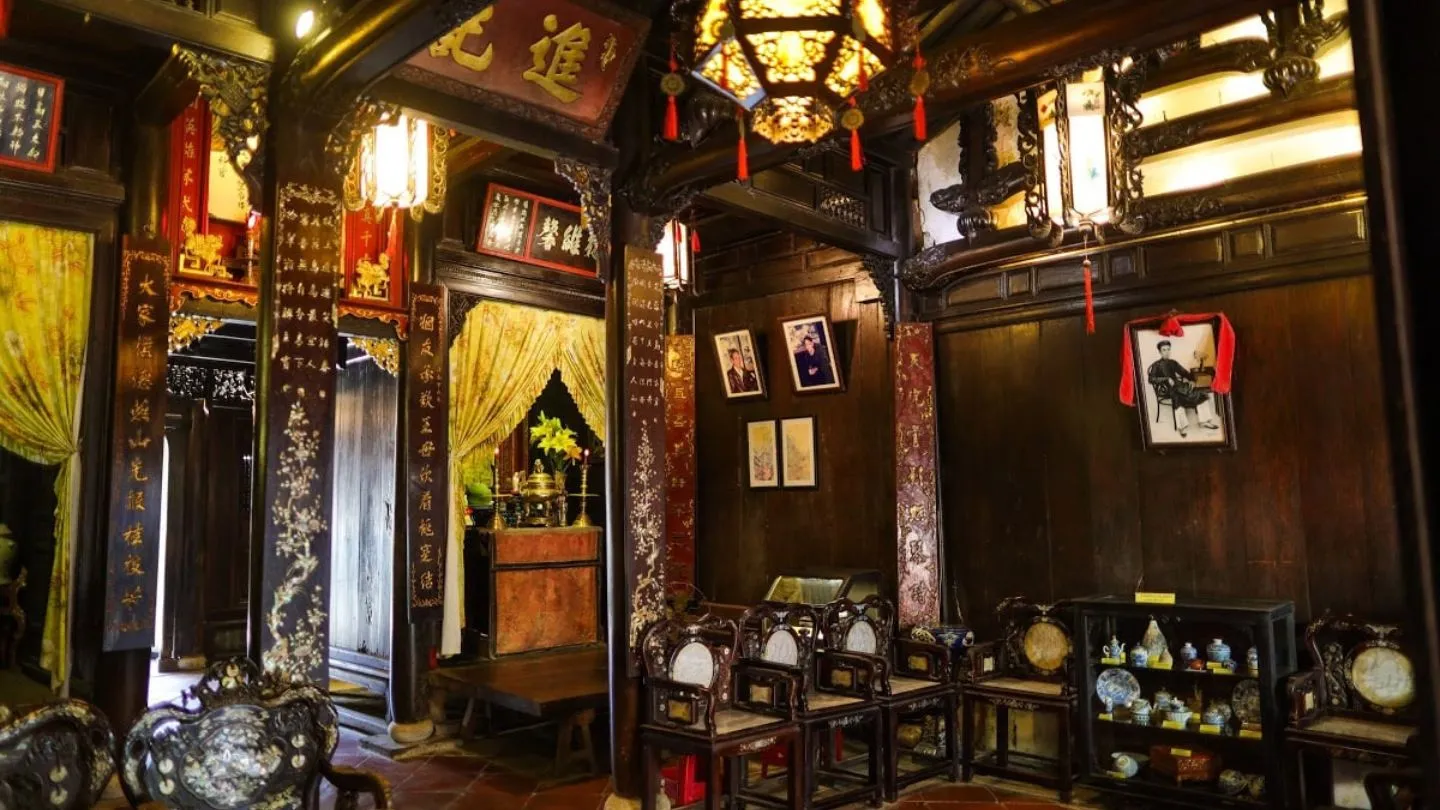
The name “Tan Ky Old House” actually came from the second generation of the Le family, chosen by Mr. Le Tan Ky himself. In Vietnamese, “Tan Ky” roughly means new beginnings and lasting prosperity – a hopeful name that reflects the family’s wish for a smooth and successful business journey. Back in the day, the house was used for trading agricultural goods, taking full advantage of Hoi An’s golden era as a bustling international port.
History of Tan Ky Old House
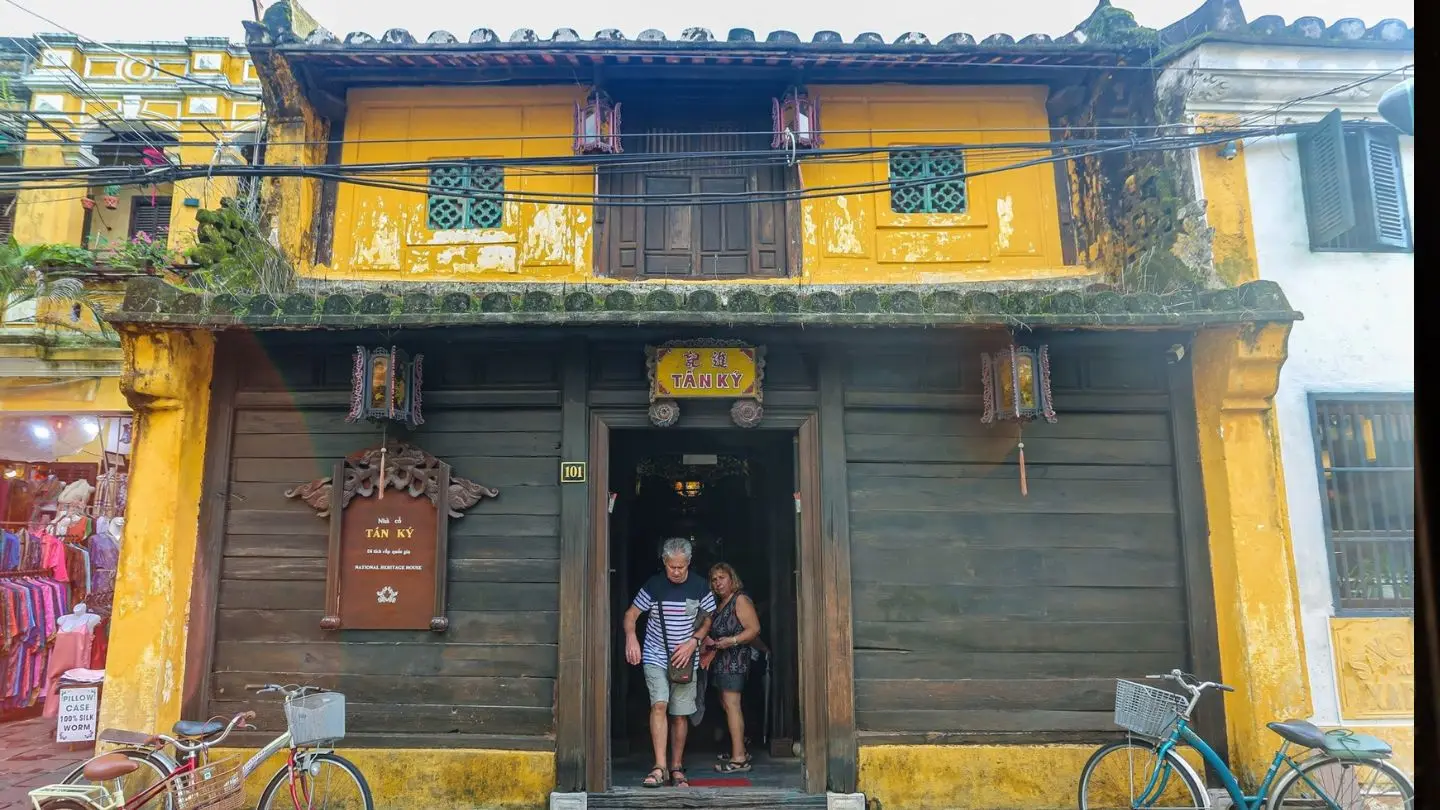
Tan Ky Old House was built way back in 1741 and has been home to seven generations of the Le family ever since. The name “Tan Ky” was given by Mr. Le Tan Ky, the second generation in the family, and it carries a hopeful meaning – something like “new beginnings” and “lasting prosperity.”
Back then, the house was used for trading agricultural goods, and its location couldn’t have been better: the front faces Nguyen Thai Hoc Street, while the back opens to Bach Dang Street and the Hoai River. During that time, Hoi An was a vibrant international trading port, with ships coming in from Japan, China, and Europe – so the house was right in the middle of the action.
Over the years, Tan Ky has weathered a lot – especially floods. One of the most serious ones was in 1964, when water rose all the way up to the first floor. But despite everything, the house has stood strong. Today, when you visit the souvenir area at the back, you’ll even spot flood markers on the walls, quietly telling stories of the past.
Special Things About Tan Ky Old House
Tan Ky Old House is full of charm and history, with unique features that make it a must-see spot when visiting the ancient town.
🏯 Architectural Harmony: East Asian Soul in Stone & Wood
In the reception hall, you’ll feel the Japanese influence shine through: the layout follows feng shui principles with the five elements – Metal, Wood, Water, Fire, and Earth – carefully balanced for peace and prosperity. Look up and you’ll see the classic yin‑yang tile roof – a symbol of harmony and the perfect flow between opposing energies.
The house’s layout reflects a Chinese-style tubular structure, typical of traditional Chinese homes. It’s a long, narrow layout with separate compartments for different uses – but surprisingly, no exterior windows. Instead, a central skylight lets in soft daylight and draws fresh air through the rooms, keeping the interior cool and naturally ventilated.
🌲 Materials That Speak of Prosperity
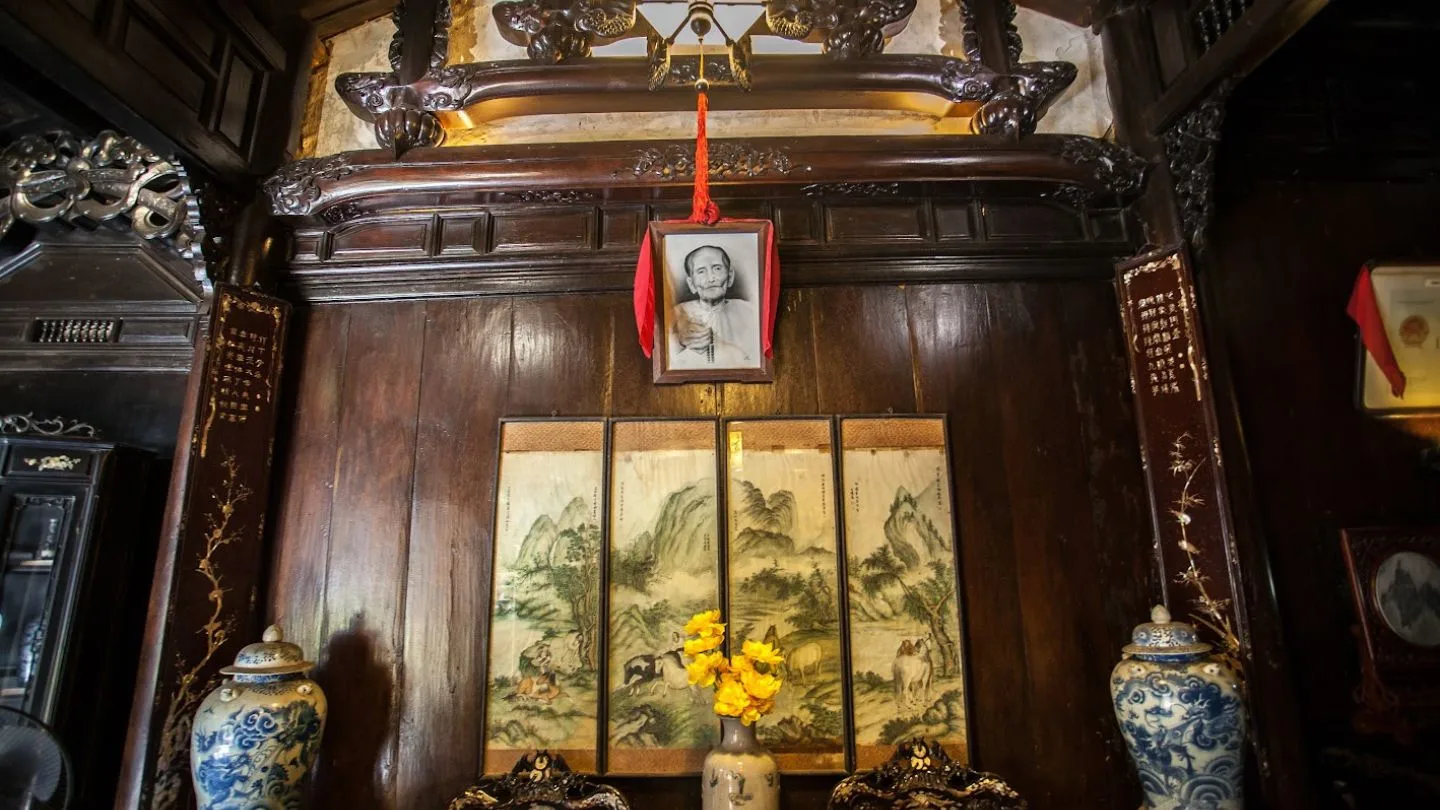
Every inch of Tan Ky’s interior reflects the success and taste of its generations. The trusses and beams are made from ironwood (gemu wood), while the doors are carved from jackfruit wood, and furniture like chairs and tables crafted from kiền kiền wood—all durable, precious, and richly detailed. Floors feature Thanh Hoa stone and Bat Trang ceramic tiles, designed to regulate temperature – cooling during summer, cozy in winter.
🎎 Motifs & Antiques: Stories in Wood and Porcelain
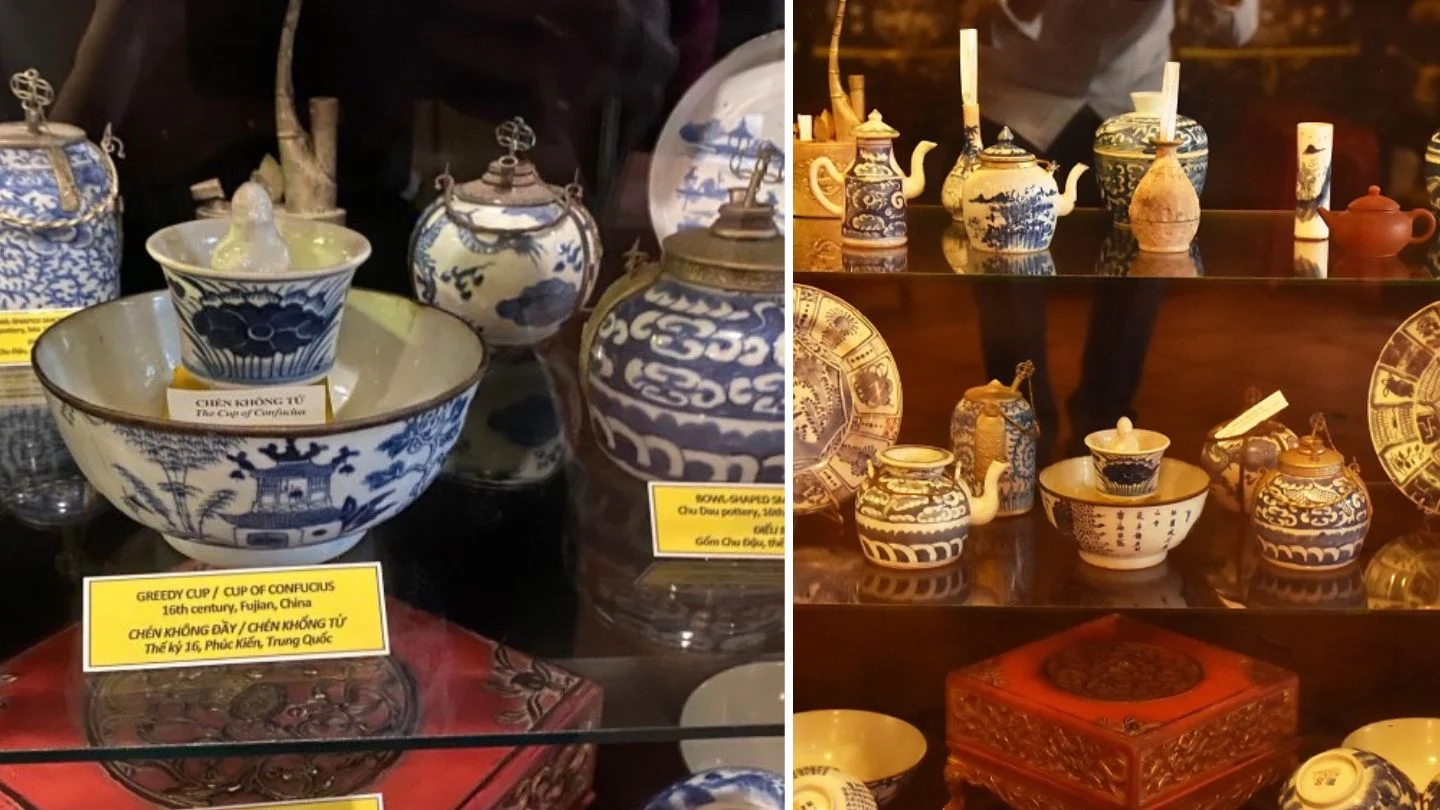
Walk through the halls and you’ll notice carved motifs – dragons, bats, pomegranates, peaches – each symbolizing good fortune, longevity, and prosperity in Vietnamese culture. The house also houses rare calligraphy panels and parallel sentences, alongside a stunning collection of heirloom antiquities: Chu Đậu ceramics, antique vases, teapots, wine jars, and even the epitaph of Lê Tấn Ký, the founder of the Tan Ky trading house
That inscription tells a powerful story – of Cong, an orphan who rose to prominence through sheer perseverance, becoming beloved for his generosity and compassion. His legacy lives on in every plank and porcelain piece here.
🏅 Heritage & Legacy: A Living Monument
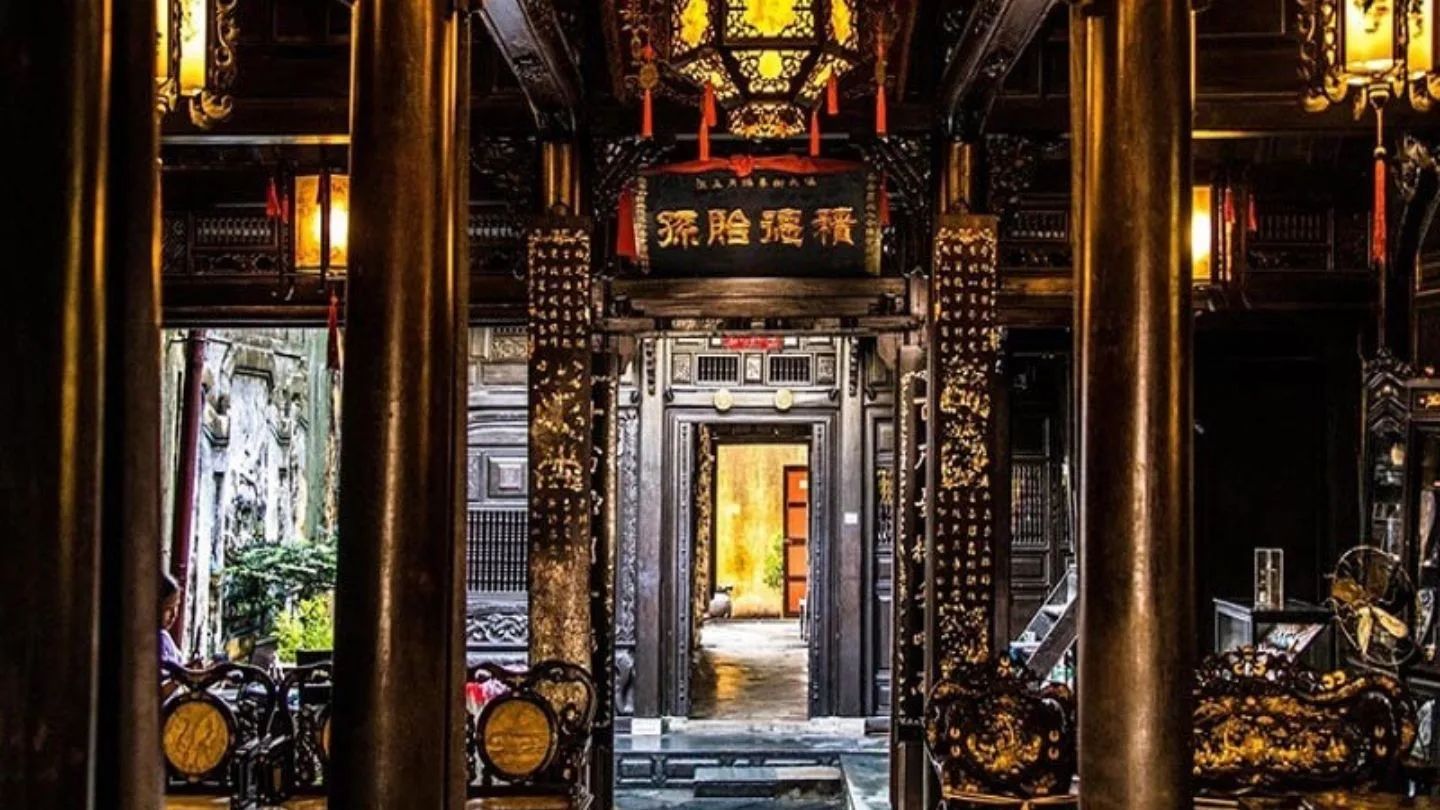
Recognized officially in 1990 as a national historical and cultural monument, Tan Ky Old House is also part of the UNESCO World Heritage zone in Hoi An. It’s not just preserved – it’s cherished, a living museum maintained by the founding family over seven generations. From its fusion architecture to its priceless artifacts, visiting Tan Ky offers a deeply immersive glimpse into Vietnam’s cultural richness and communal history.
How To Get To Tan Ky Old House From Da Nang?
Getting to Hội An from Da Nang couldn’t be easier – both cities sit just over 35 km apart, so you have plenty of transport choices to fit your style and budget.
- Local bus (LK-02 by DanaBus): Catch it from Da Nang Bus Station any time between 5:45 AM and 6:00 PM, with departures every 15–30 minutes. The air-conditioned ride takes 45–60 minutes and costs just 35,000 VND (≈ $1.50 USD) .
- Taxi or Grab: Hop in for the quickest door-to-door option—about 30–45 minutes, depending on traffic, at around 250,000–350,000 VND (≈ $10–15 USD) one way .
- Motorbike rental: For adventure seekers, renting a motorbike lets you cruise coastal roads and fishing villages at your own pace. It’s roughly a two-hour round-trip excursion with plenty of photo stops.
- Private or limousine transfer: Pre-book a private car if you prefer a stress-free service; drivers often include hotel pickup, air conditioning, and even guided stops along the way.
No matter which you choose, you’ll be in Hội An’s lantern-lit streets before you know it!
Handy Tips for Visiting Tan Ky Old House
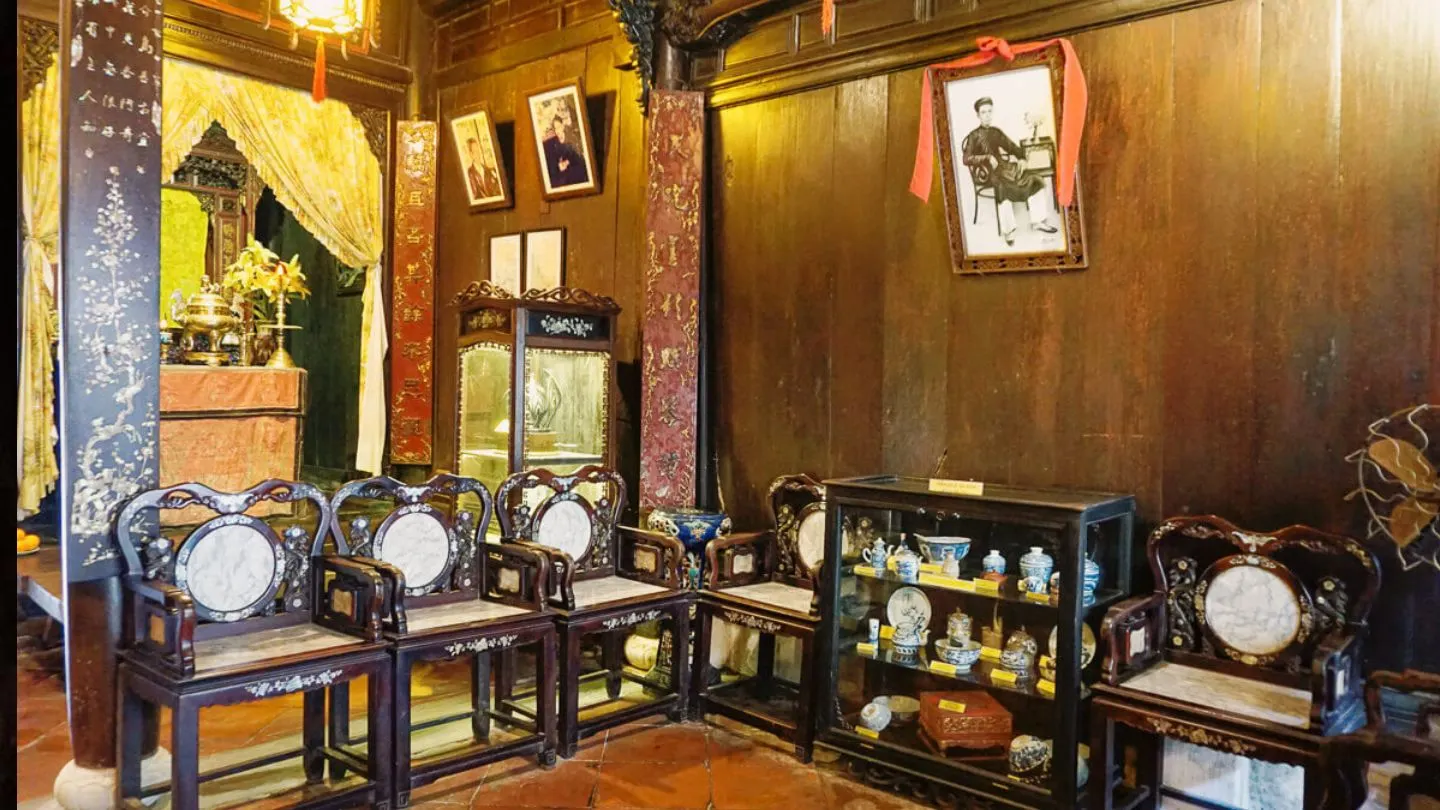
- Go early for the calm vibes: Tan Ky opens its doors from around 8:00 AM, and trust us – getting there early means fewer crowds and more space to soak in the quiet charm of the old house.
- Wear comfy shoes & dress respectfully: The ancient streets of Hội An are full of cobblestones, and the house itself is a bit of a time capsule. Opt for comfy shoes and modest outfits—think “respectful explorer” rather than beachwear.
- Hands off the antiques (seriously): It might be tempting to run your fingers along those polished wood beams or pick up a cool old object – but don’t. Many artifacts here are centuries old, and even a gentle touch can cause long-term damage. Just admire with your eyes and maybe your heart.
- Mind your volume: Remember, this isn’t a museum—it’s someone’s actual home. Keep your voice down, turn off loud notifications, and let the calm surroundings speak for themselves. You’ll appreciate the space a lot more when it’s quiet.
- No smoking, no exceptions: The house is mostly made of wood, and the air inside is delicate – just like the treasures it holds. Smoking is a big no-no. Let’s keep the space clean, safe, and smoke-free for everyone.
- Photography guidelines: You can take photos, but flash photography is often restricted to protect delicate antiques – check with staff upon arrival
- Take your time (30–60 mins is ideal): Rushing through defeats the purpose. Give yourself enough time to truly take in the intricate woodwork, hidden corners, and rich family history embedded in every detail.
- Consider a guide: A local guide can enrich your visit with context and stories behind the architecture and artifacts. Tours are available via local operators or directly from the house
- Support local heritage: Don’t miss the small souvenir shop inside—buying a memento helps support the Le family, who still own and care for the house
Conclusion
Tan Ky Old House is a special place to visit in Hoi An. It is very old but still strong and beautiful. The house shows how people lived many years ago. You can see nice wood, old things, and learn many stories. The family there is kind and keeps the house clean and nice for visitors. If you like quiet places and old houses, you will enjoy it. It feels calm, warm, and full of history.


